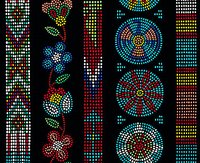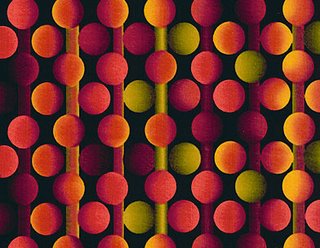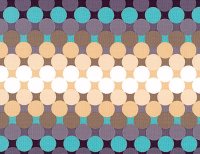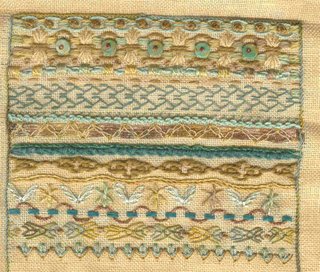
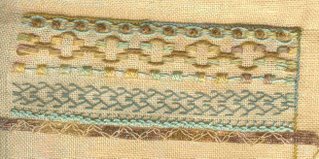
I'm behind in my blogging since Sharon's class started 2 weeks ago. I've been having too much fun doing the homework! We are compiling a personal library of stitches, whereby we study the components of a stitch and explore the possibilites of usage : entire, in part or in combination with other stitches. Considering the different fibers available, the potential of an individual stitch becomes seemingly infinite.
We are working samplers of different sizes . The first one I started is conventionally formatted, but like others, I'm also opting for postcard sized samplers where I can explore more randomly.
We are starting on linens and evenweaves but will be experimenting with other fabrics like felt and buckram .
Above is my sampler at the end of Lessons One and Two. I will be refining some stitches later, and I'm saving beadwork and filler stitches for last. Here are the descriptions of the stitches and fibers used to date.
Week One25 ct Dublin linen
border: stem stitch in Wildflowers
band 1: guilloche (Wildflower posts, #8 pearl weaving, #5 Fr. knots)
band 2: first row running stitch posts in Watercolours, 2nd row satin stitch postswoven threads ( #5 pearl cotton)
band 3 vertical, satin stitched posts , Portugese stem between posts (2 strands cotton floss)
band 4 mirrored fly stitch (2 strands Waterlilies)
band 5 line of Basque knots (#8 pearl cotton)band 6 variegated rayon/acetate ribbon yarn couched with 2-chain zig-zag (single strand silk floss)
Filler stitches and beading will be added later.
Week Two I added a few beads to Week 1, but won't add more until I've finished the stitching. I also re-did the Portuguese stem stitch between the posts in band 3.
Week 2 begins with the heavy teal band midway :
band 1: Portuguese stem stitch in 2 strands of cotton floss followed by second row of the same stitch in a wool tweed yarn.
band 2: double fly stitch mirrored and linked in #5 pearl
band 3: stem stitch, first in #12 pearl, then in #8 or 10
band 4: triple chain "butterflies" in rayon floss alternating with knotted cross stitch "stars" in Watercolours
band 5: 2 rows of running stitch in velvet cord, laced with a sparkly cabled cotton yarn.
band 6: triple fly stitch variation in Wildflowers, French knots in hemp yarn.
band7: tulip stitch, chains in silk floss, woven V's in Waterlilies. Fly stitches repeating below V's in #10 pearl.
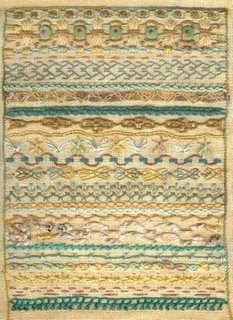 I have thoroughly enjoyed working on this sampler. This palette is very soothing. I have space left for another week, and then I will have to begin another. I allowed myself a bit of whimsy and broke format with one of the bands. I'm tempted to add little tongues, but I don't really like the eyes that well and may remove them and let the stitching be suggestive enough. Tell me what you think.
I have thoroughly enjoyed working on this sampler. This palette is very soothing. I have space left for another week, and then I will have to begin another. I allowed myself a bit of whimsy and broke format with one of the bands. I'm tempted to add little tongues, but I don't really like the eyes that well and may remove them and let the stitching be suggestive enough. Tell me what you think.




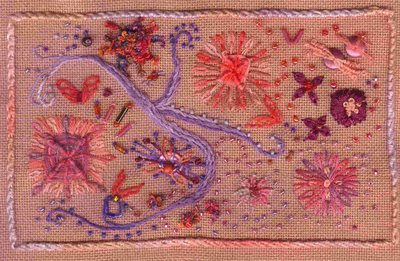
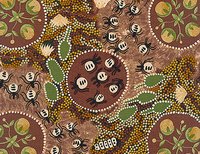
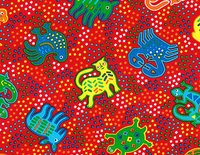
 .
.